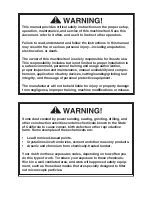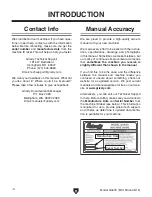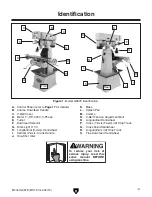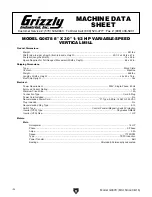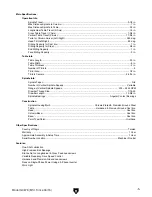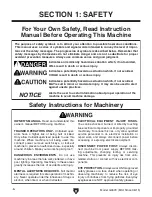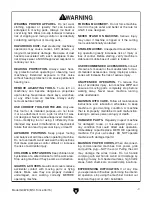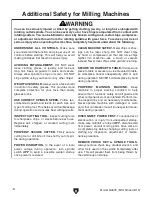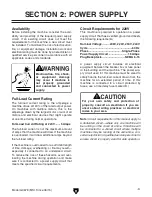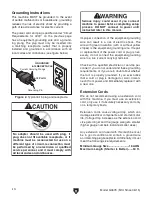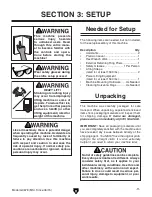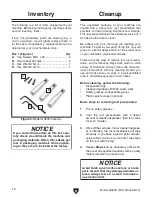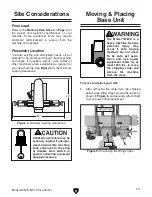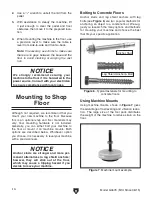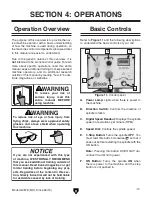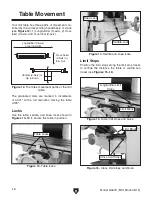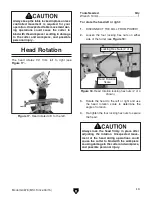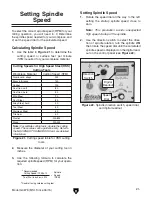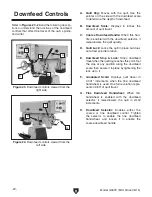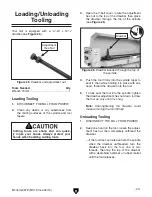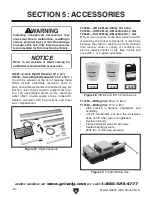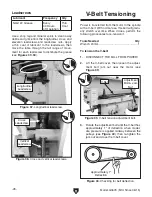
-14-
Model G0678 (Mfd. Since 06/15)
Although not required, we recommend that you
mount your new machine to the floor. Because
this is an optional step and floor materials may
vary, floor mounting hardware is not included.
Generally, you can either bolt your machine to
the floor or mount it on machine mounts. Both
options are described below. Whichever option
you choose, it is necessary to level your machine
with a precision level.
Mounting to Shop
Floor
NOTICE
Anchor studs are stronger and more per-
manent alternatives to lag shield anchors;
however, they will stick out of the floor,
which may cause a tripping hazard if you
decide to move your machine.
Figure 7. Machine mount example.
Using Machine Mounts
Using machine mounts, shown in
Figure 7, gives
the advantage of fast leveling and vibration reduc-
tion. The large size of the foot pads distributes
the weight of the machine to reduce strain on the
floor.
NOTICE
We strongly recommend securing your
machine to the floor if it is hardwired to the
power source. Consult with your electrician
to ensure compliance with local codes.
2. Use a
1
⁄
2
" wrench to unbolt the mill from the
pallet.
3. With assistance to steady the machine, lift
it just enough to clear the pallet and floor
obstacles, then move it to the prepared loca-
tion.
4. When mounting the machine to the floor, use
a precision level to make sure the table is
level from side-to-side and front-to-back.
Note: If necessary, use shims to make sure
there are no gaps between the base and the
floor to avoid cracking or warping the cast
iron.
Bolting to Concrete Floors
Anchor studs and lag shield anchors with lag
bolts (see
Figure 6) are two popular methods for
anchoring an object to a concrete floor. We sug-
gest you research the many options and methods
for mounting your machine and choose the best
that fits your specific application.
Figure 6. Typical fasteners for mounting to
concrete floors.
Anchor Stud
Lag Shield Anchor & Bolt

